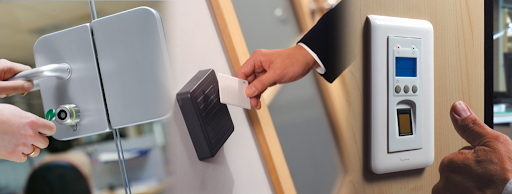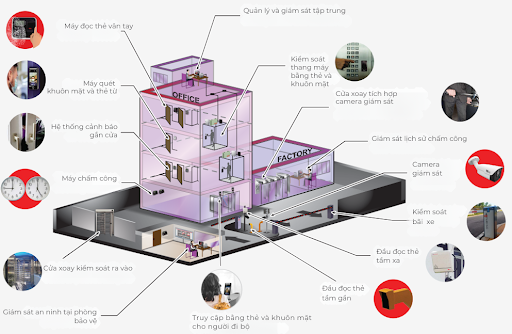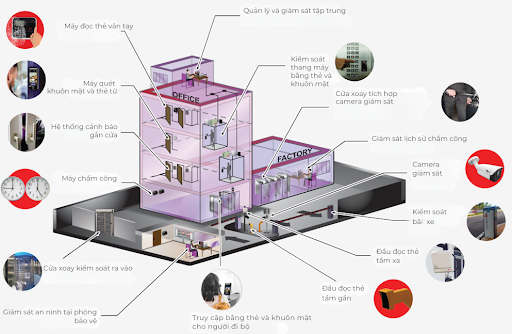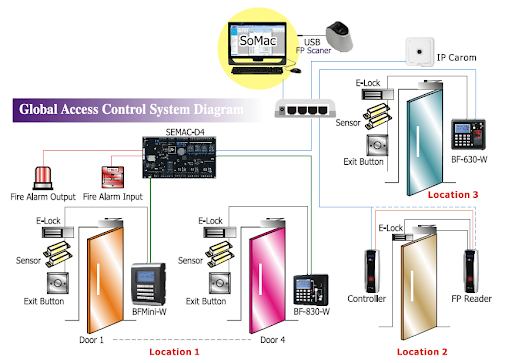Office Access Control
1. Why Office Access Control is Necessary
Office access control systems help ensure security, protect assets, manage personnel, and enhance work efficiency. With technological developments, access control solutions are becoming increasingly smart, helping businesses manage entry and exit more effectively while improving experiences for employees and customers.
2. Main Components of Office Access Control Systems
An office access control system typically includes:
- Central controller: Manages data and grants access permissions.
- Authentication devices
- Door control devices
- Management software: Monitors, assigns permissions, and stores entry/exit history.
3. Areas Requiring Access Control in Offices
- Main entrance: Restricts access by unauthorized individuals.
- Meeting rooms: Ensures only authorized employees can enter.
- Private offices: Increases security for important areas.
- Data storage and server rooms: Limits access to important documents and information.
- Parking areas: Integrates license plate recognition or key cards for vehicle management.

4. Advantages of Office Access Control Systems
- High security: Minimizes risks of unauthorized entry and protects assets.
- Integration with other systems: Connects with surveillance cameras and alarm systems.
- Improved personnel management: Tracks employee entry and exit times.
- Enhanced user experience: Employees can enter and exit easily without keys.
- Optimized operational costs: Reduces human resources needed for monitoring and security control.
5. Practical Applications of Office Access Control Systems
- Corporate offices: Managing employee and customer access.
- Office complexes for rent: Ensuring security for tenant companies.
- Technology companies: Strictly controlling data and server areas.
- Administrative buildings: Ensuring information security and restricting unauthorized access.
6. Development Trends in Office Access Control Systems
- Contactless recognition: Facial recognition technology enables faster and more secure access.
- Remote control via cloud: Remote access management, easily granting or revoking access rights.
- AI applications in security: Systems can detect and alert when anomalies occur.
- Integration with smart work systems: Linking with attendance tracking, personnel management, and data reporting.
Conclusion
Access control systems play an important role in modern offices, enhancing security, managing personnel effectively, and improving work experiences. With technological developments, control solutions are becoming increasingly smart and optimized, supporting businesses in operating smoothly and safely.
Table of contents


